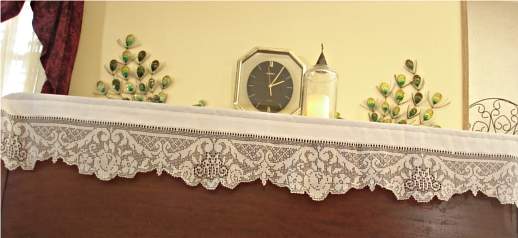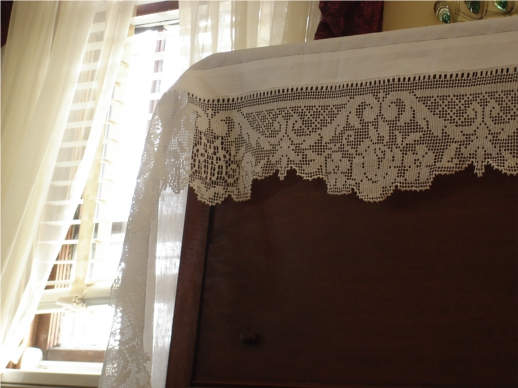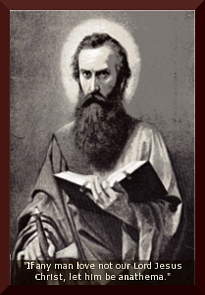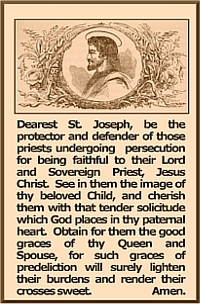I finally finished a project that has taken me more than a year: the new altar cloth for the Carmelite Monastery. It will be shipped out and delivered in time for the dedication of their newly renovated chapel which will take place on February 3.
The lace is filet crochet of size 100 cotton thread, and the cloth the finest linen I could find, from Elizabeth Morgan. All the stitching – except for the mitered corners – was done by hand, inclusive of the hemstitching which involved pulling threads, and then binding the exposed ones into groups of seven all across the length of nearly 12 feet and the two sides of the width which together were over 6 feet. That was over 18 feet of hemstitching! The traditional five crosses are embroidered on the four corners and in the center.
I can’t fully express the joy and satisfaction I have experienced (and yes, a little frustration at times) in doing this work for God. What added greatly to my joy was that Providentially, the Holy Ghost led me to a prayer in my Raccolta which I had no idea existed. I was looking for something else when I discovered that someone who sews or repairs altar linens without monetary compensation can gain indulgences by lifting up her heart to God and praying thus: “Jesu, via, veritas et vita, misere nobis.” How often I prayed that prayer during my work! As St. Therese used to say, “How sweet it is to work for Jesus!”
Before I show some pictures of the altar cloth, I add the following bit of info from the New Advent “Catholic Encyclopedia”:
“The use of altar-cloths goes back to the early centuries of the Church. St. Optatus of Mileve says that in the fourth century every Christian knew that during the celebration of the Mysteries the altar is covered with a cloth (bk. VI). Later it became a law, which, according to Gavantus, was promulgated by Boniface III in the seventh century……..
“Symbolically the altar-cloths signify the members of Christ, that is, God’s faithful, by whom the Lord is encompassed (Pontificale Rom., De ordinat. subdiaconi); or the linens in which the body of Christ was wrapped, when it was laid in the sepulchre; or the purity and the devotion of the faithful: “For the fine linen are the justifications of saints” (Revelation 19:8).”
As a further explanation, I might add that according to William Durand, French Bishop of Mende (1230 – 1296), the altar cloth represents the faithful as being vestments which cover and adorn Christ who is represented by the altar, because like flax which is macerated before it is useful as white linen, the faithful, too, must pass through diverse tribulations and carry their crosses in order to be united with Him for eternity.
By the way, I discovered that part of Durand’s works has been translated and is readily available for purchase. On the Clergy and Their Vestments is described as being “one of the most influential works on the medieval understanding of the worship ceremonies of the Latin Church.”
 Since we do not have a high altar in our house, for the photo shoot I had to make use of our piano for demonstration purposes! Nice, no? Look, you can even see at what time I took this picture!
Since we do not have a high altar in our house, for the photo shoot I had to make use of our piano for demonstration purposes! Nice, no? Look, you can even see at what time I took this picture!
 Here is one more showing the cascading drape down the side. Beautiful!
Here is one more showing the cascading drape down the side. Beautiful!
It sure beats the polyester, “crafty” look of the more modern and trendy cloths which are machine fabricated in one day and still cost a pretty penny.




6 Responses to Beautiful, Traditional Fair Linen for Altar